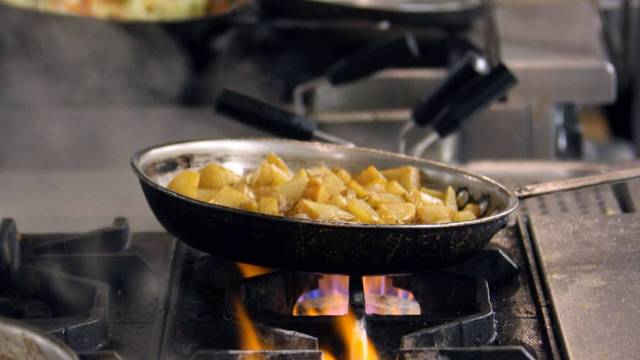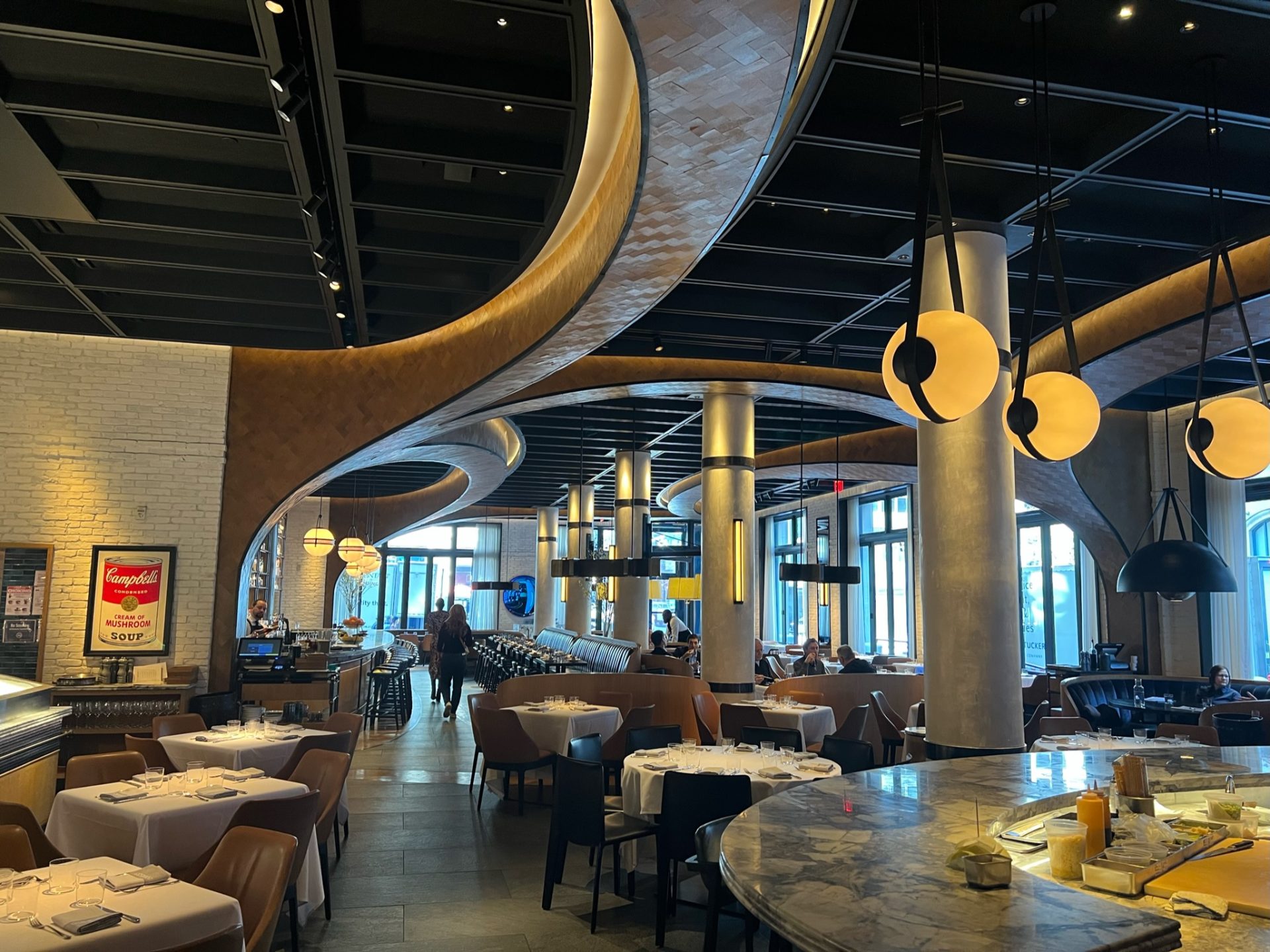Asian Fusion Restaurant: A Special Dining Experience in the Heart of Islamabad
Asian Fusion Restaurant: A Special Dining Experience in the Heart of Islamabad
Blog Article
Savor Genuine Oriental Food With a Pan-Asian Twist for a Cooking Journey
Beginning on a cooking trip through genuine Asian food, boosted with a Pan-Asian twist, uses an unique opportunity to explore the rich tapestry of tastes that define the area's diverse cooking traditions. As you consider these tempting dishes, take into consideration the cultural narratives and historical impacts that shape them, each bite providing a story waiting to be discovered. Romantic restaurants Islamabad.

Discovering Pan-Asian Tastes
In the world of global gastronomy, Pan-Asian food stands apart for its impressive diversity and the unified interaction of tastes from different Oriental cultures. This culinary approach celebrates the rich practices and special active ingredients located throughout the continent, producing a tapestry of tastes that is both satisfying and fascinating. Secret to Pan-Asian food is its ability to balance different flavors-- wonderful, salty, spicy, and sour-- while highlighting the quality and top quality of each ingredient.
From the umami-rich soy sauce of Japan to the fiery chili peppers of Thailand, Pan-Asian cuisine offers an extensive palette of tastes. These aspects are commonly incorporated in inventive methods, improving meals with layers of intricacy. For example, using great smelling natural herbs such as lemongrass and cilantro, common in Vietnamese and Thai food, adds a refreshing brightness to dishes, while the incorporation of coconut milk supplies a creamy, rich texture.
The emphasis on fresh produce and aromatic seasonings makes sure that each meal is not only a banquet for the palate but additionally for the detects. Pan-Asian food welcomes restaurants to start a culinary trip, checking out the substantial and varied landscapes of Asian gastronomy with every bite.
Combination Recipes to Attempt
While Pan-Asian cuisine is celebrated for its typical flavors, the contemporary cooking landscape is progressively welcoming combination recipes that mix these timeless components with impacts from other regions. This ingenious method not only honors the rich heritage of Eastern cookeries but likewise introduces novel taste experiences that interest modern palates.
An archetype of such a combination meal is the Korean-Mexican taco, where seasoned bulgogi beef is wrapped in a cozy tortilla, covered with kimchi and a spicy gochujang-infused salsa. This mix weds the strong, savory tastes of Korea with the dynamic, fresh components of Mexican cuisine. Likewise, sushi burritos have gotten popularity, amalgamating the fragile virtuosity of Japanese sushi with the passionate, hand-held benefit of a burrito, typically including combination components like tempura shrimp and avocado with a drizzle of wasabi mayo.
One more notable dish is Thai curry ramen, which instills the velvety, fragrant spices of Thai curry into the calming broth of standard Japanese ramen, developing a harmonious blend that entices the detects. These fusion meals extend beyond plain novelty; they stand for a culinary discussion between societies, encouraging exploration and technology in the globe of Pan-Asian cuisine.
Essential Active Ingredients and Spices
To really appreciate Pan-Asian food, one have to recognize the important ingredients and spices that form its foundation. This varied cooking design attracts from an abundant tapestry of Eastern practices, using a harmonious mix of textures and tastes.
Fragrant aspects are crucial, with garlic, lemongrass, and ginger being common across various Pan-Asian dishes. These active ingredients give a great smelling base that enhances the complexity of flavors. Spices such as celebrity anise, cardamom, and cinnamon present heat and character, resembling influences from regions like China and India.

Food Preparation Strategies and Tips
Grasping the art of Pan-Asian cuisine calls for knowledge with its distinctive food preparation strategies, each adding to the dynamic tapestry of flavors this culinary tradition is commemorated for. Central to these approaches is the stir-fry, a fast cooking method that maintains the dietary honesty and brilliant colors of components. Making use of a frying pan, the stir-fry technique enables even warmth circulation, vital for attaining the characteristic texture and flavor equilibrium of Pan-Asian dishes.
An additional basic technique is steaming, particularly common in Chinese food. This gentle approach maintains the natural flavors and nutrients of active ingredients, making it excellent for fish and shellfish and vegetables. Dumplings, a precious staple, typically gain from steaming, leading to soft, delicious structures.
Grilling, also integral, passes on great smoky depths to recipes such as Korean bulgogi or Japanese yakitori (pan asian dining Islamabad). This strategy commonly includes marinating active ingredients, allowing flavors to penetrate deeply prior to food preparation over an open flame or warm plate
Last but not least, grasping the art of balancing tastes-- wonderful, sour, salty, bitter, and umami-- is important. Appropriately layering these aspects can elevate a dish from regular to remarkable, supplying a facility and satisfying cooking experience that symbolizes the significance of Pan-Asian cuisine.
Eating Experiences Worldwide
Throughout the world, Pan-Asian cuisine uses an unequaled eating experience, celebrated for its abundant tapestry of tastes and dynamic discussions. This culinary phenomenon has gone beyond social borders, recording the hearts and tastes of food lovers worldwide. In multicultural cities like New York, London, and Sydney, Pan-Asian dining establishments serve as fusions where cooking traditions from Thailand, Japan, China, and past converge, giving diners with an eclectic mix of dishes that highlight the region's look here diversity.
The worldwide allure of Pan-Asian cuisine depends on its ability to supply both authenticity and development. Cooks masterfully wed typical ingredients such as lemongrass, soy sauce, and miso with contemporary strategies, resulting in recipes that are both acquainted and refreshingly new. This blend enables restaurants to embark on a culinary journey that values heritage while embracing modernity.
Additionally, eating experiences are boosted via attentively developed atmospheres that show the principles of Pan-Asian aesthetics. From minimalist Japanese-inspired interiors to lively Thai-themed rooms, each restaurant uses an unique setting that matches the culinary offerings. Consequently, patrons are not just eating a dish but partaking in a cultural experience, making Pan-Asian dining a genuinely international phenomenon.
Final Thought
The expedition of Pan-Asian food offers a profound understanding of the elaborate interplay of Look At This tastes and cooking traditions across Asia. By welcoming fusion dishes such as Thai curry ramen and sushi burritos, the culinary journey not only highlights the versatility of standard components yet also showcases ingenious modern strategies. This gastronomic journey, improved by essential spices and cooking methods, gives a special possibility to appreciate the social variety and culinary creativity that define Pan-Asian food on a worldwide range.
Beginning on a culinary journey via authentic Asian food, enhanced with a Pan-Asian spin, offers a distinct possibility to discover the abundant tapestry of flavors that define the area's varied culinary customs.In the world of worldwide gastronomy, Pan-Asian food stands out for its impressive variety and the harmonious interaction of tastes from different Oriental societies. Key to Pan-Asian food is its ability to stabilize contrasting flavors-- pleasant, salted, spicy, and sour-- while highlighting the quality and top quality of each active ingredient.

Report this page